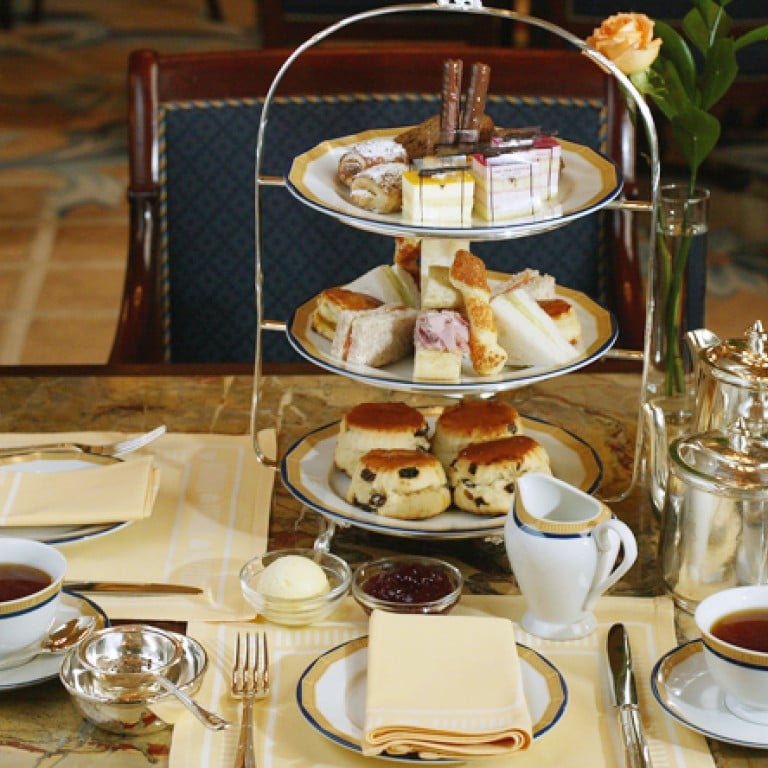
Mandarin Oriental: confusing afternoon and High Tea
Mandarin Oriental Hong Kong is famed for its legendary afternoon teas, which are served with elegance and style in both Clipper Lounge and Café Causette. So gushes the press release.
Soon the hotel will launch a new High Tea set, we learn, with delicate sandwiches ranging from cucumber, dill and cream cheese to mature ham granary bread and smoked salmon with sour cream bagels. There’s only one problem, chaps, that’s not High Tea. Not even close. You’ve made the classic mistake of confusing Afternoon Tea with High Tea, two entirely different beasts. I’m amazed the culinary giants of the Mandarin’s Food and Beverage department have got that so wrong.
“No afternoon tea would be complete without a selection of raisin and classic scones accompanied by Mandarin Oriental’s famed rose petal jam and Devon clotted cream,” it continues. Guests can enjoy all these together with a full range of beverages from tea and coffee to hot chocolate and even champagne. Well, if you’re swilling coffee and hot chocolate, it’s hardly tea.
“Afternoon tea is a classic indulgence, enjoyed by everyone and is a treat suitable for many occasions, from celebrations to family get-togethers, or just catching up with old friends,” says the hotel’s director of food and beverage Nicolas Dubort.
He might be French, where they don’t go in for afternoon tea much, but that’s no excuse. He’s probably hung around faux colonial long enough to know his High from his Afternoon. Long enough to know you don’t serve High Tea from 3pm to 6pm, even at the Mandarin.
The difference
Let’s get it straight. Afternoon tea is a British tradition consisting of tea, sandwiches, scones and cake. If you want to be posh, it’s served in delicate bone china cups, with saucers. The difference between this and High Tea is very clear. Afternoon tea is served between three and four pm. When afternoon tea became fashionable in England in the early 19th century, thanks to Anna, the Duchess of Bedford, it was designed to provide a snack to bridge the long gap between lunch and dinner. Back then, dinner was not served until 8pm. These days, afternoon tea is less of a stop-gap than the preserves of English country town tea shops and five-star hotels, who charge a fortune for a scone with cooked (clotted) cream and strawberry jam.
While the 19th century gentry enjoyed Afternoon Tea, High Tea was more egalitarian. Nanny would serve High Tea to children too young for grown-up dinner, often in the nursery. It was their evening meal, followed by bedtime stories and bed. Further down the social scale, workers in the newly industrialised Britain ate their ”tea” when they got home from the factory. It was a substantial evening meal, a far cry from poncy scented tea and scones.
Their “tea” was hot, filling and washed down with gallons of strong, sweet tea. Farm workers did the same.
In short, apart from the content, the “High’ bit referred to the difference between Afternoon Tea served on low, drawing room tables, or in the garden, while the field and factory workers’ High Tea was served sitting up at a normal kitchen table.
British working class folks – though of course nobody considers themselves working class in Britain any more - and farming people still call their evening meal “tea”, but now it’s often considered more upmarket to call it "supper". Just as they don’t call their mid–day meal “dinner”, any more, but refer to the more middle-class sounding “lunch.”
Confusing
And just to confuse everyone even more, “supper” used to and still sometimes does, refer to a late night snack eaten by older English people just before bed, especially in country farming areas where tea is served at 6pm and it’s several hours until bed.
To check if this still applies, I asked a few true blue Brits what they considered to be High Tea. “Baked beans on toast, with sausages if you‘re lucky,” replied one. “Or boiled eggs with marmite soldiers on Sunday night when you’re a kid,” said another. Time? About six o’clock or slightly later. And Afternoon Tea? “Tea and sconces at tea time – about three o’clock.”
So there you have it. Does it matter? No, not really. But it would be nice that if pretentious five-star hotels would take the trouble to get it right.

